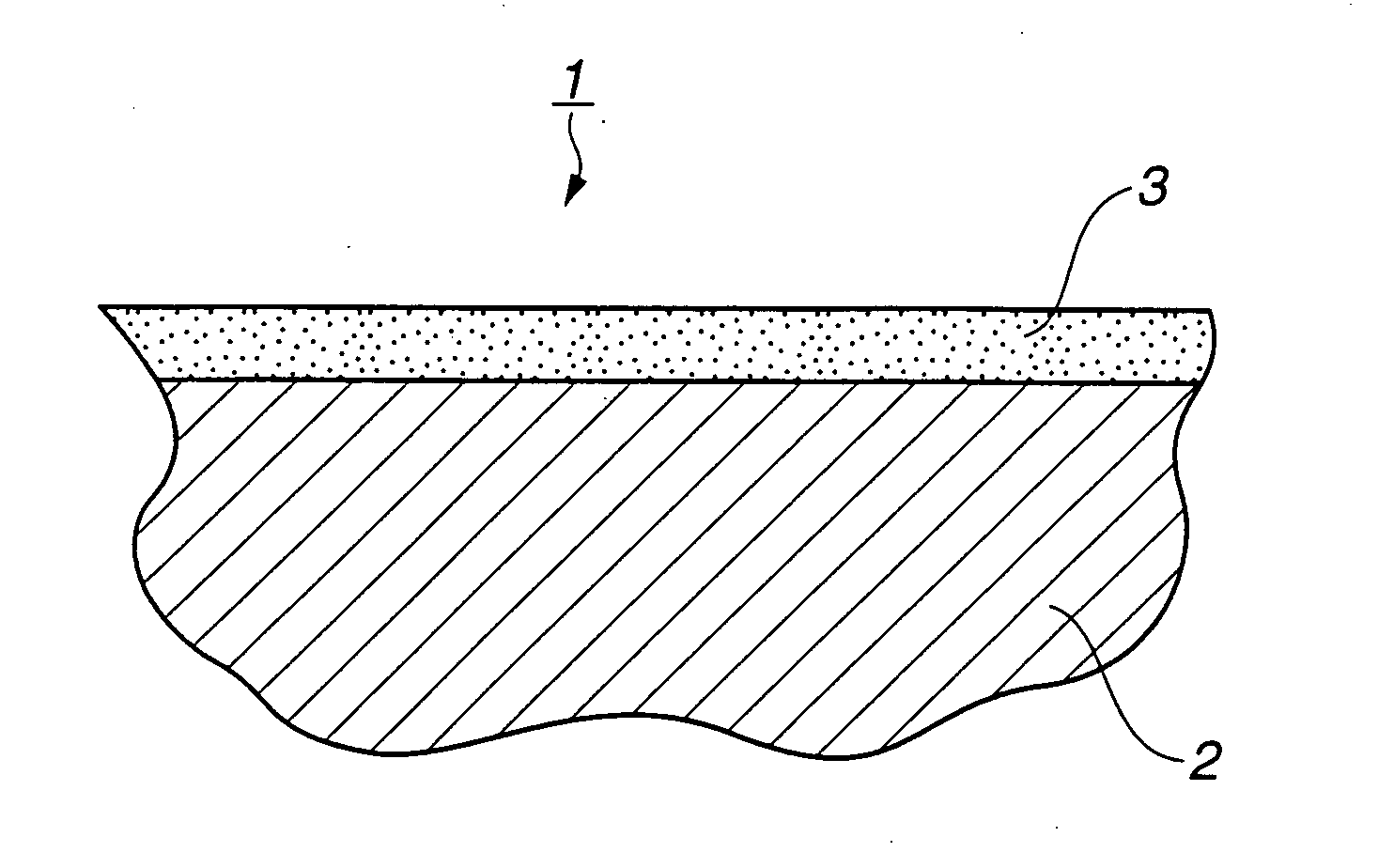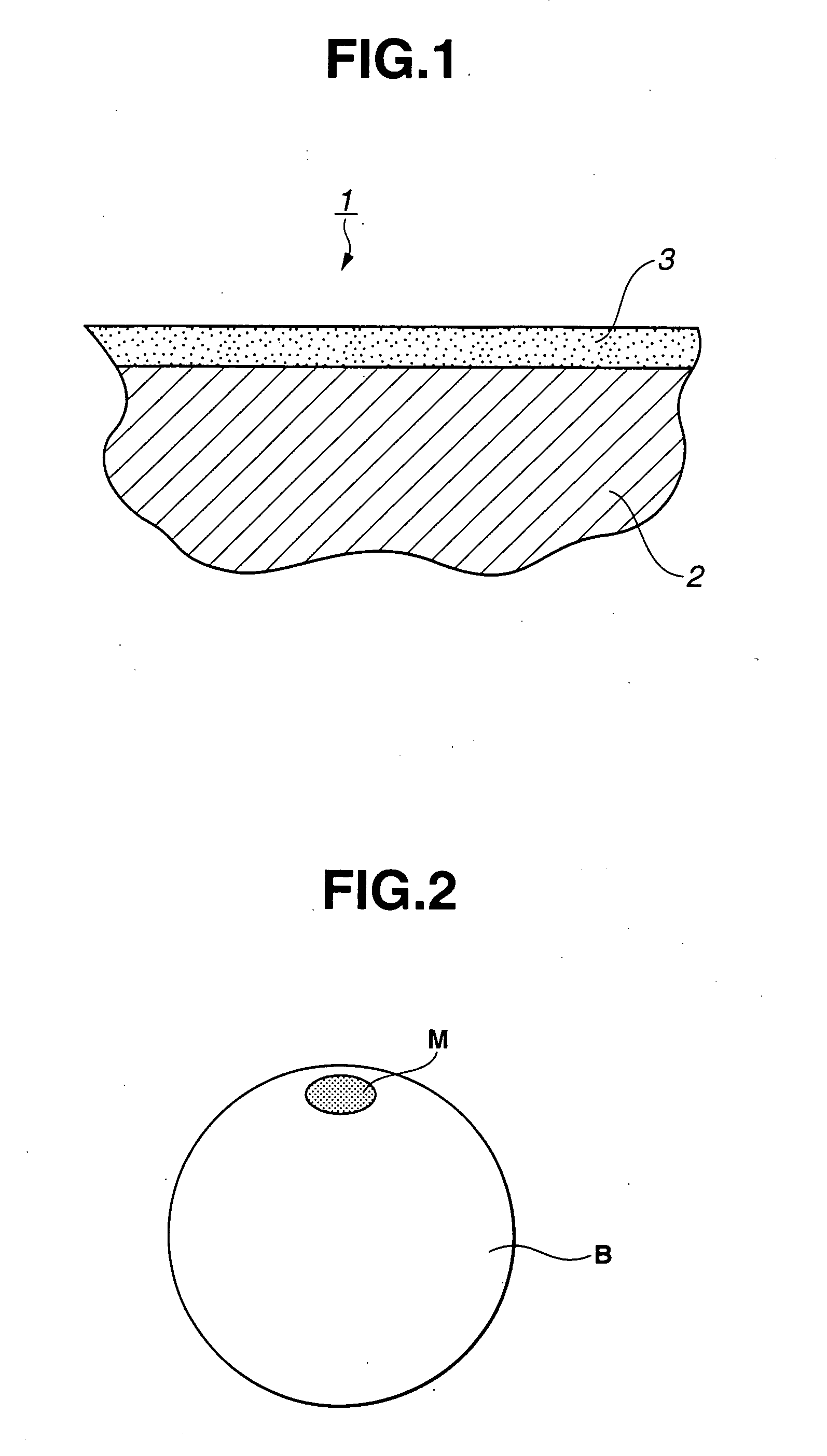Hard-carbon coated sliding member
- Summary
- Abstract
- Description
- Claims
- Application Information
AI Technical Summary
Benefits of technology
Problems solved by technology
Method used
Image
Examples
example 1
[0031] A disk plate of carburized steel SCM4 15 (according to JIS G 4105) having a diameter of 30 mm and a thickness of 3 mm was prepared as a base substrate. A surface of the disk plate was superfinished to an arithmetic mean roughness Ra of 0.020 μm (according to JIS B 0601). A hard carbon coating was formed on the superfinished surface of the disk plate by magnetron sputtering in an atmosphere of argon gas. In the magnetron sputtering, a graphite disk plate was uses as a target. In order to dope a certain amount of cobalt in the hard carbon coating, a sector cobalt plate was attached onto the graphite disk target. The graphite disk target had a radius of 80 mm, whereas the sector cobalt plate had a radius of 80 mm and a vertex angle of 7.5° to cover 1 / 48 of the graphite target. In advance of the formation of the hard carbon coating on the steel disk plate, a coating growth rate was determined by performing magnetron sputtering under the same conditions as above except that only a...
example 2
[0043] A hard-carbon coated disk plate was prepared in the same way as in Example 1, except that a hard carbon coating of the disk plate was formed by magnetron sputtering with a sector nickel plate being attached onto a graphite disk target to dope a certain amount of nickel into the hard carbon coating. The graphite disk target had a radius of 80 mm, whereas the sector nickel plate had a radius of 80 mm and a vertex angle of 7.5° to cover 1 / 48 of the graphite target. The sputtering time was controlled in such a manner as to adjust the thickness of the hard carbon coating to 1.0±0.3 μm.
[0044] The surface roughness, composition and sliding characteristics of the thus-obtained hard carbon coating were tested in the same way as in Example 1. The hard carbon coating had a surface roughness Ra of 0.020 μm, a nickel content of 25 atomic % (as measured by XPS), a hydrogen content of 0.1 atomic % or less and a friction coefficient of 0.023, and the opposing member had a sliding mark of 52...
example 3
[0046] A hard-carbon coated disk plate was prepared in the same way as in Example 1, except that a hard carbon coating of the disk plate was formed by magnetron sputtering with both of a sector cobalt plate and a sector nickel plate being attached onto a graphite disk target to dope cobalt and nickel into the hard carbon coating of the disk plate. The graphite disk target had a radius of 80 mm, whereas each of the sector cobalt plate and the sector nickel plate had a radius of 80 mm and a vertex angle of 3.75° to cover 1 / 96 of the graphite target. The sputtering time was controlled in such a manner as to adjust the thickness of the hard carbon coating to 1.0±0.3 μm.
[0047] The surface roughness, composition and sliding characteristics of the thus-obtained hard carbon coating were tested in the same way as in Example 1. The hard carbon coating had a surface roughness Ra of 0.015 μm, a cobalt content of 14 atomic %, a nickel content of 11 atomic %, a hydrogen content of 0.1 atomic % o...
PUM
| Property | Measurement | Unit |
|---|---|---|
| Percent by atom | aaaaa | aaaaa |
| Percent by atom | aaaaa | aaaaa |
| Percent by atom | aaaaa | aaaaa |
Abstract
Description
Claims
Application Information
 Login to View More
Login to View More - R&D
- Intellectual Property
- Life Sciences
- Materials
- Tech Scout
- Unparalleled Data Quality
- Higher Quality Content
- 60% Fewer Hallucinations
Browse by: Latest US Patents, China's latest patents, Technical Efficacy Thesaurus, Application Domain, Technology Topic, Popular Technical Reports.
© 2025 PatSnap. All rights reserved.Legal|Privacy policy|Modern Slavery Act Transparency Statement|Sitemap|About US| Contact US: help@patsnap.com


